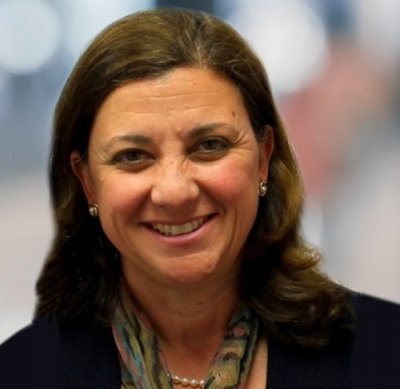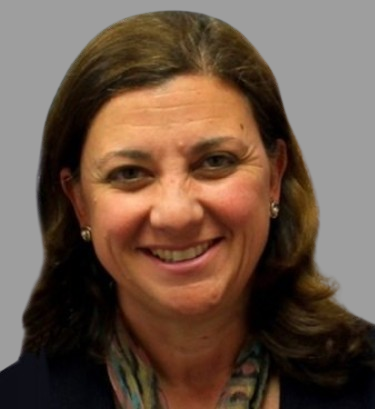Reinventing Healthcare
The past few months have brought about a major sea change in medicine. In truth it was long overdue. As a surgeon, from a family of surgeons, it isn’t hard to see how the system was failing both patients and doctors. The process of referrals, scheduling, insurance approvals, billing and collecting became overwhelming, diverting both time and resources away from the patient. Imagine purchasing a product on line only to find out after it arrived, the cost of delivery was four times the price of the item. That is what healthcare has become for most of us, necessary but unaffordable, except with the help of employer sponsored insurance…until now.
It took a major pandemic to force us to re-evaluate priorities and what is emerging is an entirely new paradigm of delivering care and with it a digital healthcare revolution.
Physicians, and surgeons in particular, are always accused of being old school, set in their ways, or late adopters. Granted, nearly by definition, doctors are schooled for years to absorb a significant amount of information derived from years of research and clinical observation. It is only when training is completed, that we are allowed to veer off the prescribed path and tailor treatment to better fit a patient’s needs. It is the patient who “didn’t read the textbook” that we learn from most. Therefore, physicians are actually programmed from the start to adapt to new situations, guided by years of knowledge and experience. How else would we be able to safely use new devices, learn new procedures, or prescribe new therapies?
However, in the past decade we have seen doctors struggle to enter data, write orders, or document properly into electronic medical records. Despite the many generations of physicians who have now “grown up” with technology, rather than getting better, we seem to have gotten worse and EHRs are still the number one cause of physician burnout. Part of the reason is no one ever bothered to ask the physician, or the “end user”, what would mirror our work flow best. Instead, billers and schedulers were given priority, it’s no wonder many companies built electronic records on top of their existing revenue software. Now with digital healthcare upon our doorstep, we have the opportunity to not just embrace the technology but decide for ourselves how best to use it for our patients.
Telehealth is not a new concept. The software for secure video conferencing has been around since astronauts have been on the space station. We have been using digital technology to read images from afar, to render second opinions, and to connect intensivists to critical care units in need of coverage. Until now the average brick and mortar surgeon has not had the chance to use it for their own patients. Surgery, for example, has traditionally been considered a contact sport; the physical exam is often critical to our decision making, however, a good history and a review of available data is a significant part of a diagnosis, especially in the nonurgent setting. As long as the communication exists directly between the physician and patient, couldn’t a virtual examining room be effective in the right circumstances?
There is no doubt telemedicine visits may be less convenient, and potentially more time consuming for the physician, and there are challenges especially in the elderly population. Although since the start the pandemic a significant percentage of older patients have become more comfortable with a telemedicine visit and doctors report a reduction and in visit times. It also requires a different work flow for follow up care, you can’t simply tell patients check with the front desk on their way out to schedule a test or procedure. But if we work through these issues, as end users, we can adapt the technology to fit our needs, rather than the reverse, as was the case with electronic records. Digital technology can streamline access, eliminate wasted steps, and connect the patient to the proper point of care faster. The cost of running an office will decrease, as some office hours will become virtual, and more attention can be given either to new patients or those that have to be seen sooner. On the patient side, many would be grateful not to leave work, wait in a waiting room for what amounts to a five-minute visit, or take up an appointment slot that can be given to a new patient. In addition, remote specialty care can limit transportation costs and challenges for the elderly in long term care facilities. In other words, the benefits of telemedicine, even as it exists today, far outweigh its’ cost.
Which brings us to the challenge, once the smoke clears and the insurers and CMS start to pay attention, will telemedicine remain reimbursable on par with in person visits or will they be adjusted for site of service? Will physician licensing extend beyond state lines? Does it even matter given the current supply of doctors? The wait times for specialists will only become worse, and after years of limiting residency positions, it will take years to train enough doctors to meet the demands of the near future. In addition, direct to consumer models, driven by high deductible plans, along with expansion in health savings accounts, will require more convenient access and a more transparent system.
Digital healthcare has arrived and the technology required to facilitate patient encounters has created exciting new opportunities. It’s as if we are emerging from the Dark Ages with a Renaissance of ideas and imagination. The current pandemic has created a fertile ground for entrepreneurs, including physician entrepreneurs, to creating specialty specific technology that enhance a physician’s ability to both diagnose and prescribe treatment. For example, a talented young surgeon created a simple on line eye exam to test acuity, color blindness, and astigmatism. The results are sent to an optometrist or ophthalmologist to supplement a remote visit or decrease the time a patient needs to be face to face for an exam. Even after the pandemic subsides, better access to a less expensive, more convenient eye exam has tremendous implications especially for those with limited access to specialty care and those who require vision exams prior to employment or even getting a driver’s license.
The biggest challenge for physicians will be how to incorporate telehealth into their practice without losing autonomy or revenue. Until now it was used only for minor ailments, like allergic rhinitis or for health and wellness; where physicians or other allied health professionals, are employed by telemedicine providers, like a Teladoc or MDLive. However, telemedicine restores the primacy of the doctor patient relationship and with it, a new marketplace has emerged. Imagine a Cardiologist, receiving accurate data from a remote patient monitor, who can consult directly and immediately with their patient and intervene prior to an adverse event. Or a retired Dermatologist, with years of experience, continuing to care for patients with a remote office, not virtual medicine, but real doctors connecting to patients without obstacles. Digital technology allows us to reinvent healthcare and it is our responsibility, as physicians, not just to be part of the solution, but to lead the way.
Paula Muto, MD FACS is a General and Vascular surgeon in private practice outside Boston for over twenty years. She has a successful outpatient vein center and is an outspoken advocate for patients and women’s health. She is the founder and CEO of UBERDOC, Inc., a disruptive platform whose mission is to increase access and price transparency.

Paula Muto MD FACS
UBERDOC Founder and CEO Paula M. Muto, MD FACS, is a practicing vascular and general surgeon in solo practice and the owner of the Vein Center at Mutosurgical. She is a member of a family of physicians and surgeons who have collectively practiced medicine in Massachusetts for over 50 years. She is an outspoken advocate for patient care and is passionate about women’s health issues.



